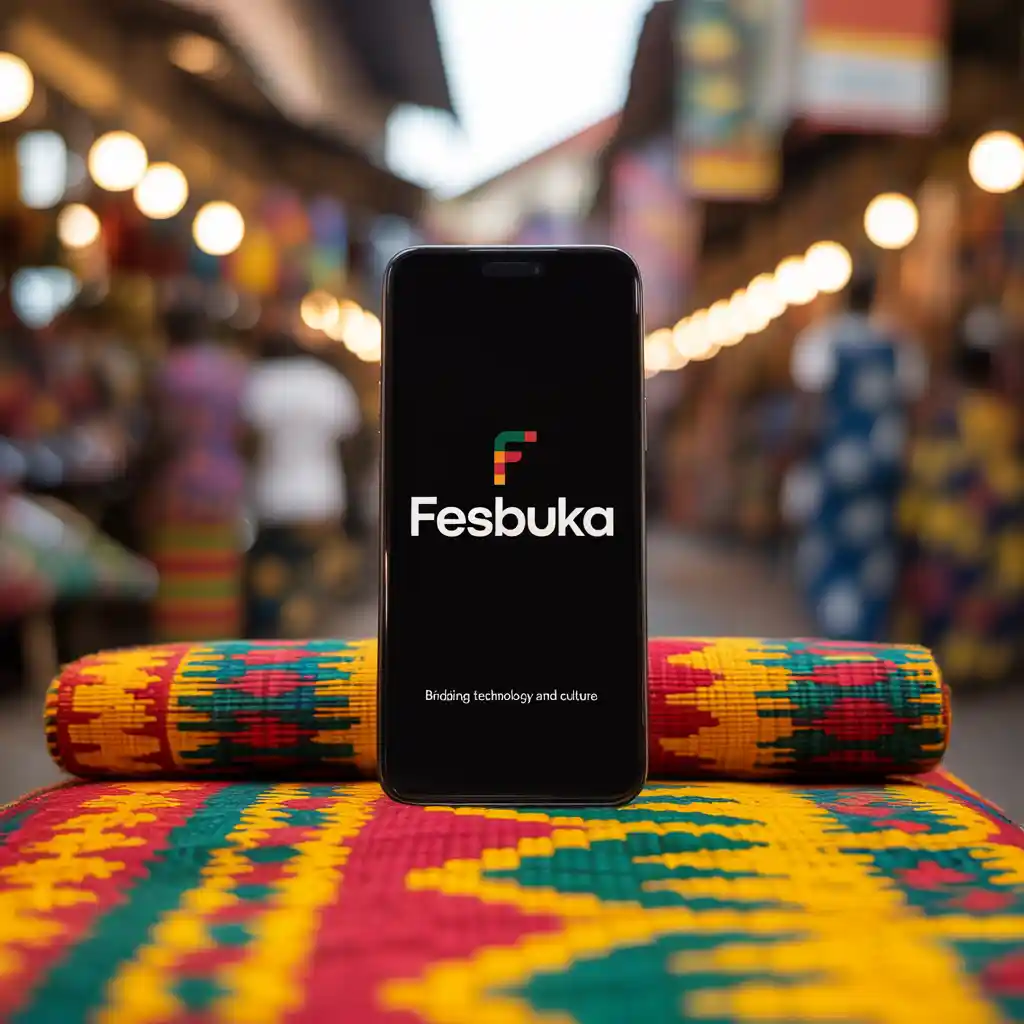Welcome to the world of Fesbuka, where technology meets culture in a seamless blend that’s reshaping how we connect and communicate. Whether you’re sharing moments from your daily life or diving into rich cultural experiences, Fesbuka is at the forefront of this digital transformation. It’s more than just a platform; it’s an evolving ecosystem that captures the essence of diverse global communities. As we explore its history, impact, and future potential, you’ll discover how Fesbuka has become an integral part of modern society—a bridge linking our technological advancements with our deep-rooted cultural identities. Join us as we delve into what makes Fesbuka unique and why it matters today more than ever before.
The History and Evolution of Fesbuka
Fesbuka began as a simple platform for social interaction. Launched in the early 2000s, it aimed to connect people across diverse backgrounds.
Over the years, its functionality evolved. Users could share photos, post updates, and engage with various multimedia content. This shift transformed Fesbuka into more than just a networking site; it became a cultural hub.
As technology advanced, so did Fesbuka’s features. Mobile accessibility brought about significant changes in user engagement and participation rates. The introduction of algorithms personalized experiences based on individual preferences.
With each update, Fesbuka adapted to societal trends and norms. It reflected shifting cultural values while also influencing them through widespread reach and connectivity.
By embracing globalization, Fesbuka enabled conversations that crossed borders and bridged communities worldwide. Its evolution tells a story of adaptation in an ever-changing digital landscape.
How Fesbuka has Impacted Culture
Fesbuka has woven itself into the fabric of modern culture, reshaping how we communicate and connect. It transcends borders, allowing diverse communities to share their traditions and ideas effortlessly.
Through its user-generated content model, Fesbuka empowers individuals to express themselves creatively. This platform has become a canvas for art, music, and storytelling from different cultures around the globe.
Moreover, cultural movements gain visibility through viral trends on Fesbuka. Activism finds a voice here; important issues can reach audiences far beyond local constraints.
The blending of various cultural elements fosters an environment where people learn about each other’s backgrounds. Recipes from one part of the world might inspire culinary fusions in another region.
In this way, Fesbuka encourages collaboration rather than division. It’s not merely a social network; it’s a global stage showcasing humanity’s rich tapestry of experiences and perspectives.
The Pros and Cons of Fesbuka in Modern Society
Fesbuka has reshaped the way we connect, offering unprecedented access to diverse cultures. It enables users to share ideas instantly across borders, fostering global dialogue. This interconnectedness can lead to greater understanding and empathy among people.
However, there are downsides. The platform often promotes superficial connections rather than meaningful relationships. Users may find themselves overwhelmed by constant notifications or misinformation that spreads rapidly.
Privacy concerns also loom large. With personal data at risk, many worry about how their information is used or shared without consent.
Furthermore, Fesbuka’s algorithm can create echo chambers, limiting exposure to differing viewpoints. This phenomenon stifles critical thinking and encourages polarization within communities.
Navigating these pros and cons requires a balanced approach. Users need awareness of both the benefits and challenges posed by this digital landscape as they engage with Fesbuka daily.
Fesbuka Features and Functions
Fesbuka offers a rich array of features designed to enhance user experience. At its core, the platform prioritizes connectivity among individuals and communities. Users can share updates, photos, and videos effortlessly.
The customizable profile options allow for personal expression. Each member can showcase their interests through tailored content feeds. This fosters a unique space where creativity thrives.
Messaging capabilities facilitate real-time conversations, bridging distances between users around the globe. Groups and events add another layer of interaction, encouraging community engagement on various topics.
Additionally, Fesbuka’s algorithm curates personalized recommendations based on user behavior. This ensures that members discover relevant content aligned with their passions.
Integrating multimedia tools enriches posts further—users can incorporate music or live streaming into their interactions. Such versatility makes Fesbuka not just a social network but a cultural hub for sharing experiences and ideas seamlessly.
Case Studies: How Different Cultures Use Fesbuka
In Japan, Fesbuka serves as a platform for artistic expression. Artists showcase traditional and contemporary works, connecting with audiences globally. This fusion enhances cultural appreciation.
Meanwhile, in Brazil, the vibrant festival culture thrives on Fesbuka. Users share colorful images and stories of carnival celebrations. It unites communities while promoting local traditions to an international audience.
In Kenya, Fesbuka plays a crucial role in education. Schools utilize it to enhance learning through shared resources and collaboration among students from various backgrounds.
Conversely, in Sweden, environmental awareness campaigns flourish on Fesbuka. Activists leverage the platform to raise consciousness about sustainability issues while exchanging best practices across borders.
Each case highlights how diverse cultures adapt Fesbuka uniquely, fostering connections that transcend geographical boundaries.
The Future of Fesbuka and Cultural Integration
The future of Fesbuka looks promising as it continues to evolve and adapt to the needs of its diverse user base. With technological advancements, Fesbuka is likely to incorporate more immersive experiences that blend virtual reality and augmented reality.
Cultural integration will play a crucial role in this transformation. Users from various backgrounds will share their traditions through multimedia content, enriching the platform’s offerings. This exchange can foster understanding and appreciation across different cultures.
Moreover, enhanced algorithms may allow for better content personalization, ensuring users receive culturally relevant suggestions tailored to their interests.
As communities grow within Fesbuka, there’s potential for collaboration on global initiatives promoting cultural heritage. Such connections can bridge gaps between generations and inspire creative projects worldwide.
How users leverage these tools will shape Fesbuka into an even more dynamic space for cultural exploration and interaction.
Conclusion
Fesbuka represents a fascinating intersection of technology and culture. It has evolved from its early days into a multifaceted platform that influences how we communicate, share information, and celebrate our identities.
Its impact on culture is profound. Fesbuka not only promotes cultural exchange but also serves as a mirror reflecting societal changes. The way various communities embrace or resist this platform highlights the ongoing dialogue between tradition and modernity.
However, the pros and cons of Fesbuka cannot be ignored. While it fosters connections across borders, it also raises concerns about privacy, misinformation, and cultural homogenization. Users must navigate these complexities to maximize their experience while minimizing potential pitfalls.
The features of Fesbuka are designed for user engagement—offering tools for sharing content like photos, stories, and events while fostering community interactions through groups and pages tailored to individual interests.
Case studies demonstrate diverse uses of Fesbuka around the globe. From connecting diaspora communities to promoting local businesses in rural areas, different cultures leverage this platform uniquely while maintaining their distinctive traditions.
Looking ahead, the future of Fesbuka lies in its ability to adapt further to changing social landscapes while facilitating deeper cultural integration. As global digital communication continues evolving rapidly, so too will platforms like Fesbuka play critical roles in shaping human interaction across cultures everywhere.
As we continue exploring these dynamics in our lives each day on such platforms like Fesbuka—we can appreciate both what brings us together globally as well as what makes each culture uniquely valuable within this shared space.

